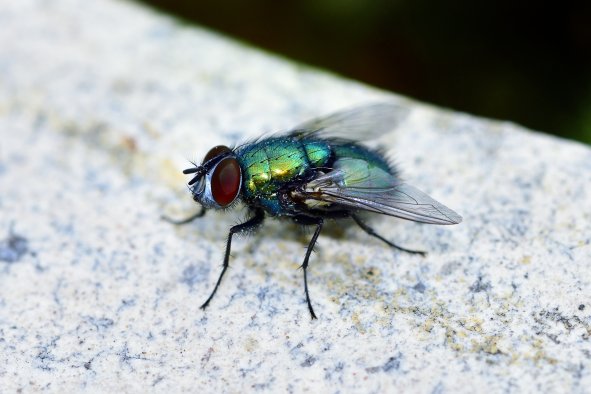The small traces of gas that form the atmosphere of our moon may have come from meteorites hitting its pockmarked surface.
The exact origins of the moon's extremely thin atmosphere—known as an exosphere—have remained a mystery to scientists for decades, but according to a new paper in the journal Science Advances, it may mainly be a result of "impact vaporization."
This means that the bombardment of the moon by dust-sized micrometeoroids vaporizes chemicals in the soil, with the gas becoming part of the moon's atmosphere.
Compared to Earth's thick atmosphere, the moon's exosphere is composed of trace amounts of gases, making it nearly a vacuum. These gases include hydrogen, helium, neon, and tiny amounts of other gases like oxygen, argon, and methane. The atmospheric density on the moon is incredibly low, with a surface pressure of about 0.000000000000003 bar—nearly negligible compared to Earth's atmospheric pressure of about 1 bar at sea level.
We have known about the moon's exosphere since the 1980s. It was suspected to be generated by space weathering, but scientists weren't sure of the exact mechanisms.
"The Moon has a tenuous atmosphere produced by space weathering," the researchers wrote in the paper.
The researchers described how lunar samples from the Apollo missions revealed that meteorites of varying sizes have constantly hit the moon's surface, vaporizing atoms in the soil and kicking them up into the atmosphere. The constant hitting of the moon replenishes any gases lost to space.
"We give a definitive answer that meteorite impact vaporization is the dominant process that creates the lunar atmosphere," study author Nicole Nie, an assistant professor in MIT's Department of Earth, Atmospheric, and Planetary Sciences, said in a statement.
"The moon is close to 4.5 billion years old, and through that time the surface has been continuously bombarded by meteorites. We show that eventually, a thin atmosphere reaches a steady state because it's being continuously replenished by small impacts all over the moon."
Another mechanism was discovered to play a major role using data collected by NASA's Lunar Atmosphere and Dust Environment Explorer (LADEE). The orbiter remotely studied the atmosphere of the moon, finding that "ion sputtering" from charged particles of solar wind can cause atoms in the lunar soil to be launched into the air.
"Based on LADEE's data, it seemed both processes are playing a role," Nie said. "For instance, it showed that during meteorite showers, you see more atoms in the atmosphere, meaning impacts have an effect. But it also showed that when the moon is shielded from the sun, such as during an eclipse, there are also changes in the atmosphere's atoms, meaning the sun also has an impact. So, the results were not clear or quantitative."
The researchers studied isotopes of potassium and rubidium in the lunar soil, which are volatile chemicals that are easily vaporized by both of these mechanisms. An isotope is a version of an element that has the same number of protons but a different number of neutrons in its nucleus. They all have the same basic chemical properties because they have the same number of protons, but they have different masses because of the varying number of neutrons.
The researchers figured that if they were being vaporized in this manner, lighter isotopes would likely fly off into the atmosphere, with heavier ones left behind. Different ratios of light and heavy would remain depending on whether impact vaporization or ion sputtering was involved.
They discovered that heavy isotopes were left in the lunar soil, indicating that ion vaporization is the primary method of atmosphere generation on the moon. The researchers concluded that the exosphere was 70 percent impact vaporization, with the remaining 30 percent created by ion sputtering.
"With impact vaporization, most of the atoms would stay in the lunar atmosphere, whereas with ion sputtering, a lot of atoms would be ejected into space," Nie said. "From our study, we now can quantify the role of both processes, to say that the relative contribution of impact vaporization versus ion sputtering is about 70:30 or larger.
"Without these Apollo samples, we would not be able to get precise data and measure quantitatively to understand things in more detail. It's important for us to bring samples back from the moon and other planetary bodies, so we can draw clearer pictures of the solar system's formation and evolution."
These discoveries could pave the way to studying the thin atmosphere around other moons in our solar system, including the Martian moon Phobos.
"The discovery of such a subtle effect is remarkable, thanks to the innovative idea of combining potassium and rubidium isotope measurements along with careful, quantitative modeling," Justin Hu, a postdoc researching lunar soils at Cambridge University, who was not involved in the study, said in the statement.
"This discovery goes beyond understanding the moon's history, as such processes could occur and might be more significant on other moons and asteroids, which are the focus of many planned return missions."
Do you have a tip on a science story that Newsweek should be covering? Do you have a question about heat? Let us know via science@newsweek.com.
Disclaimer: The copyright of this article belongs to the original author. Reposting this article is solely for the purpose of information dissemination and does not constitute any investment advice. If there is any infringement, please contact us immediately. We will make corrections or deletions as necessary. Thank you.



